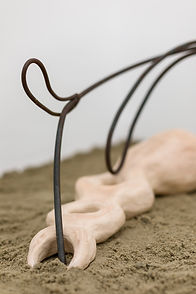
Leopoldo Ponce
Vicente Baltar
Um quarto na Terra
Curadoria por Ana Gallo

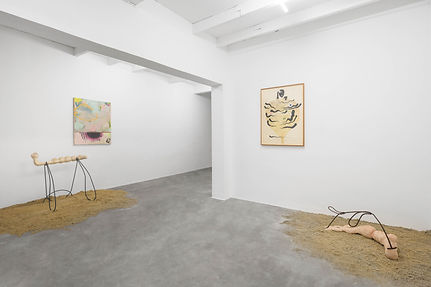


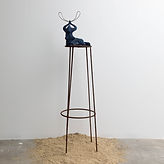
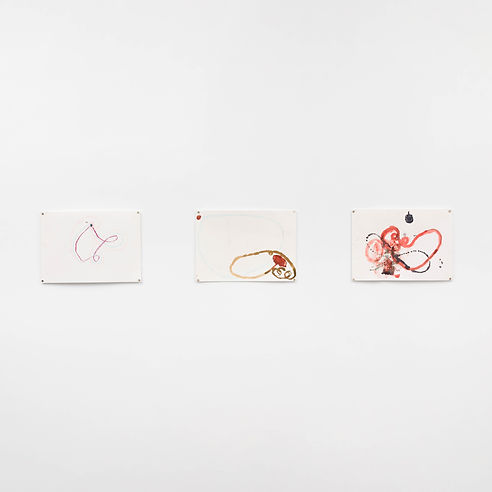
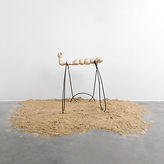
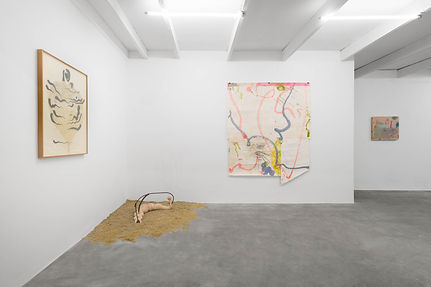
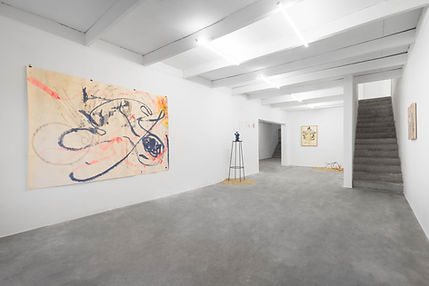
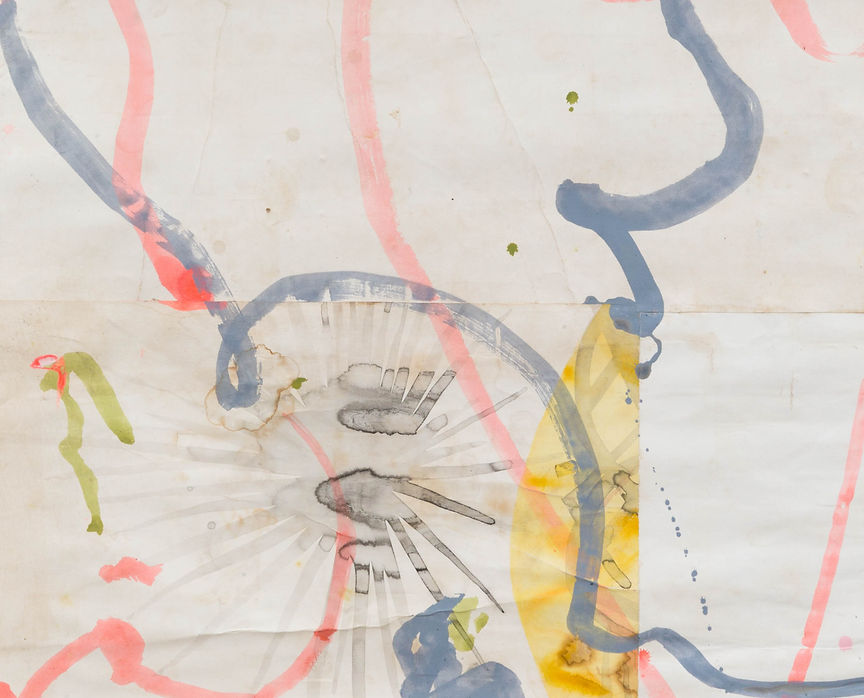

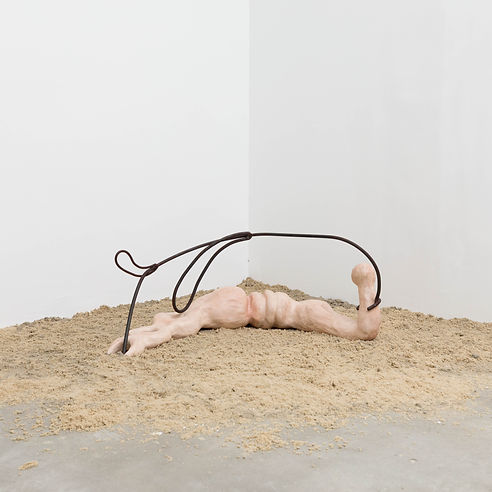
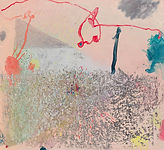
EXPOSICOES
o que ja passou por aqui
Um quarto na Terra
Ao fim e ao cabo, a vida começa e termina na inconsciência, e as ações plenamente conscientes não passam de ilhotas num arquipélago de sonhos. Seria tão absurdo reduzir a vida à vigília quanto considerar que a realidade é feita de blocos lisos e perceptíveis em vez de ser um enxame mutante de partículas de energia e matéria vibrátil apenas porque não somos capazes de percebê-las a olho nu. Por isso, nenhuma vida pode ser plenamente narrada ou avaliada em sua felicidade ou em sua loucura sem levar em conta as experiências oníricas. (...) Não se trata aqui de ver que a vida é um sonho, mas de ver que os sonhos também são vida. [1]
Convido quem entra nesse espaço a pausar, respirar três vezes, e permitir que o pé direito permaneça lá fora — firmando-se no conhecido —, enquanto o esquerdo se aventura na corda bamba que une realidade e devaneio. Qual é o primeiro sonho de que você se lembra?
É nesse intervalo tênue, entre a vigília e o sonho, que se situam as práticas de Leopoldo Ponce e Vicente Baltar. Assim como no sonho lúcido, em que se torna possível agir dentro do próprio sonho, os artistas aqui operam sobre seus desejos, suas inquietações e seus impulsos criativos. Estar acordado, para eles, é também imaginar um mundo possível — e, mais do que isso, intervir sobre ele.
Há nas obras uma operação sobre a iminência — esse espaço rarefeito, que existe entre o que ainda não aconteceu e aquilo que já começa a se manifestar. Onde o inconsciente dança com o concreto, onde o corpo interpreta o abstrato, e onde aquilo que Néstor García Canclini descreve como “estética da iminência” se manifesta como forma de existir no intervalo — na vibração do presente, no sensível, no que é imediatamente acessível e transformável. “Trata-se de uma estética da imanência, que se realiza sem recorrer a transcendências nem a grandes narrativas, fundada na experiência sensível, na circulação de objetos, imagens e signos que organizam a vida cotidiana” [2]. Nesse estado suspenso, tudo ainda pode ser.
É um território de dúvida, de suspensão, de não lugar, que se revela, paradoxalmente, como espaço fértil de criação. Um quarto na Terra, onde repouso e invenção se tornam codependentes. Este quarto é também um lugar de metamorfose, de reconhecimento, de descanso, de invenção de si e do mundo.
O abstrato, aqui, não é fuga da realidade, mas instrumento de transmutação. Suas formas sinuosas, ora etéreas, ora densas, tensionam o visível e o invisível. A matéria torna-se atravessada pela lucidez de quem sonha acordado, pela racionalidade que não se separa da sensibilidade.
São sonhos que ganham corpo — ou corpos que se deixam atravessar pelo vislumbre do possível.
Ana Gallo
Notas
1- PRECIADO, Paul B. - Um apartamento em Urano: Crônicas da travessia - 2020
2- CANCLINI, Néstor García. Culturas híbridas: estratégias para entrar e sair da modernidade - 2015
A Room on Earth
After all is said and done, life begins and ends in unconsciousness, and fully conscious actions are nothing more than small islets in an archipelago of dreams. It would be just as absurd to reduce life to wakefulness as it would be to believe that reality is made of smooth, perceptible blocks instead of a mutating swarm of particles of energy and vibrating matter—simply because we are not capable of perceiving them with the naked eye. That is why no life can be fully narrated or judged in terms of its happiness or madness without taking into account dream experiences. (...) This is not about seeing life as a dream, but about recognizing that dreams are also life. [1]
I invite those entering this space to pause, take three deep breaths, and allow the right foot to remain outside—anchored in the familiar—while the left foot ventures onto the tightrope that connects reality and reverie. What is the first dream you remember?
It is in this subtle interval, between wakefulness and dreaming, that the practices of Leopoldo Ponce and Vicente Baltar are situated. Just like in lucid dreaming, where it becomes possible to act within one’s own dream, the artists here work through their desires, their anxieties, and their creative impulses. To be awake, for them, is also to imagine a possible world—and more than that, to intervene in it.
In their works, there is a focus on imminence—that rarefied space between what has not yet happened and what is just beginning to manifest. Where the unconscious dances with the concrete, where the body interprets the abstract, and where what Néstor García Canclini describes as the “aesthetics of imminence” emerges as a way of existing in the in-between—in the vibration of the present, in the sensorial, in what is immediately accessible and transformable. “It is an aesthetics of immanence, realized without recourse to transcendence or grand narratives, grounded in sensory experience, in the circulation of objects, images, and signs that shape everyday life" [2]. In this suspended state, everything is still possible.
It is a territory of doubt, suspension, of non-place, which paradoxically reveals itself as fertile ground for creation. A room on Earth, where rest and invention become codependent. This room is also a place of metamorphosis, of recognition, of rest, of self-invention and reinvention of the world.
The abstract here is not an escape from reality, but a tool for transmutation. Its sinuous forms, at times ethereal, at times dense, stretch the boundaries between the visible and the invisible. Matter becomes permeated by the lucidity of those who dream while awake, by a rationality that does not detach from sensitivity.
These are dreams that take on form—or bodies that allow themselves to be crossed by the glimpse of what could be.
Ana Gallo
Notes:
1- PRECIADO, Paul B. – Um apartamento em Urano: Crônicas da travessia – 2020
2- CANCLINI, Néstor García – Culturas híbridas: estratégias para entrar e sair da modernidade – 2015
.png)
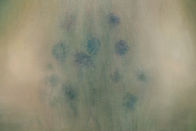
Lucas Milano
Luiz Escañuela
Curadoria por Jessica Factor
Corpo em bruma


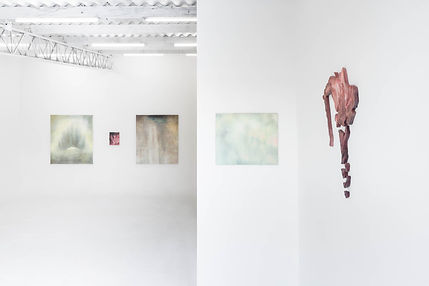

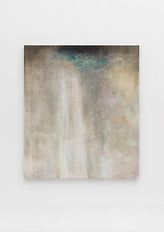
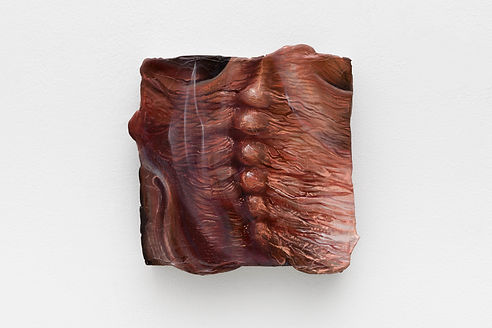
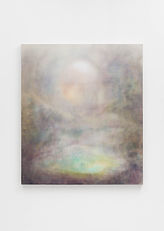

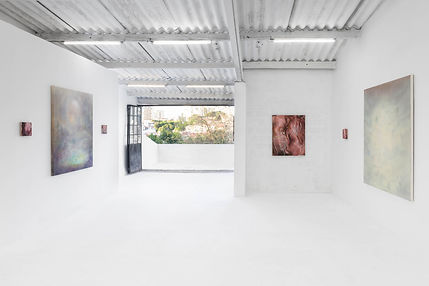

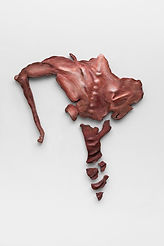
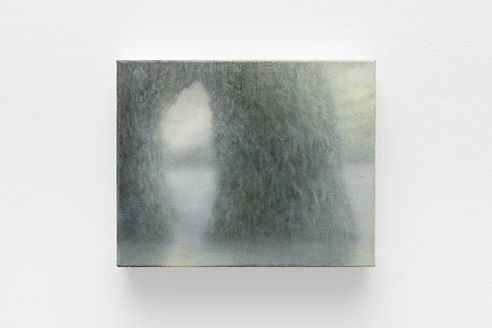
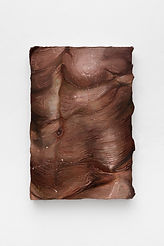
EXPOSICOES
o que ja passou por aqui
Corpo em bruma
Corpo e paisagem são temas abordados à exaustão na história da arte, ambos carregados de nuances temporais que continuam a seduzir artistas. As paredes de uma gruta têm suas texturas bem definidas, mas basta uma gota de orvalho para que seu contorno se transforme; o corpo possui uma configuração fisiológica precisa, mas pode vibrar em outro matiz com uma leve mudança de temperatura. É nesse espaço sutil de transformação que se insere a exposição conjunta de Luiz Escañuela e Lucas Milano, que utilizam a pintura para capturar essa matéria instável do mundo, transpondo-a da bidimensionalidade para um campo suspenso. Nada aqui se reduz a um esquema simples de oposições. A relação entre as obras é antes um jogo de escalas e intensidades. Transitar o olhar entre uma pintura e outra é como adentrar em grutas que se formam nesse território indeterminado e encontrar, no seu interior, camadas e vincos materiais que sustentam atmosferas densas.
As paisagens de Lucas Milano pairam entre o reconhecível e o intangível. A bruma não é só um efeito pictórico, mas uma condição de existência. Suas imagens nunca se fixam completamente, atravessadas por um tempo que dilata, apaga e refaz continuamente suas formas. Há nelas uma suspensão, um respiro prolongado, como se o mundo pausasse para dar espaço a uma "imensidão íntima", onde a espacialidade deixa de ser exclusivamente externa e se projeta no observador. As superfícies oscilam, e a fatura da pintura flutua como partículas prestes a mudar de estado. É pelo olhar que elas tomam forma, delineadas difusamente pelo subconsciente, pela memória e pela intenção de quem observa.
À medida que essa neblina se dissipa, é a matéria que se impõe nas obras de Luiz Escañuela. Suas superfícies tensionam, repuxam, dobram-se sobre si mesmas, deixando ver torções, veios e marcas que oscilam entre o corpo e o território. Nelas reside algo mineral, geológico, como se o corpo fosse terra e a terra carregasse em si um organismo latente. Pele e rocha se confundem em camadas que acumulam extratos temporais, cicatrizes que narram suas próprias histórias. Se Milano pede distância para que a imagem se forme lentamente no olhar, Escañuela propõe outra aproximação, na qual fissuras e relevos se tornam perceptíveis na medida em que o corpo se aproxima da superfície.
O encontro das obras no espaço expositivo sugere um ritmo orgânico de expansão e contração, como o movimento contínuo de um pulmão. Inspira e expira, abre e comprime. Nesse entre-espaço, forma-se um tecido capaz de dissolver as separações convencionais entre sujeito e objeto.
A tentativa aqui é pensar a pintura fora das lógicas habituais de oposição ou hierarquia, em um campo onde os elementos são estados transitórios de uma mesma substância. Figura e fundo, imagem e matéria, aquele que observa e o que é observado permanecem em trânsito, fundindo-se continuamente. Estar diante dessas pinturas é habitar esse intervalo — entre vapor e rocha, entre pele e neblina, entre aquilo que se dissolve e aquilo que persiste.
Jessica Factor
Body in mist
Body and landscape are themes exhaustively explored throughout the history of art, both laden with temporal nuances that continue to captivate artists. The walls of a cave have well-defined textures, yet a single drop of dew is enough to transform their contours; the human body has a precise physiological configuration, yet it can vibrate with a different hue from a mere shift in temperature. It is within this subtle space of transformation that the joint exhibition of Luiz Escañuela and Lucas Milano finds its place. Through painting, they capture this unstable matter of the world, transposing it from two-dimensionality into a suspended field. Nothing here is reduced to a simple scheme of oppositions. The relationship between the works is more a play of scales and intensities. To shift one’s gaze from one painting to another is like entering caves formed in this indeterminate territory, discovering within them layers and material folds that sustain dense atmospheres.
Lucas Milano’s landscapes hover between the recognizable and the intangible. The mist is not merely a pictorial effect, but a condition of existence. His images never settle completely, traversed by a time that dilates, erases, and continuously reshapes their forms. There is a sense of suspension, a prolonged breath, as if the world pauses to make room for an “intimate immensity,” where spatiality ceases to be purely external and projects itself onto the observer. The surfaces waver, and the facture of the painting floats like particles on the verge of changing state. It is through the gaze that they take form—diffusely outlined by the subconscious, by memory, and by the observer’s intent.
As the mist begins to clear, it is matter that asserts itself in the works of Luiz Escañuela. His surfaces stretch, pull, fold onto themselves, revealing twists, veins, and marks that oscillate between body and territory. There is something mineral, geological in them — as if the body were earth, and the earth carried within it a latent organism. Skin and rock blur together in layers that accumulate temporal strata, scars that tell their own stories. While Milano invites distance, allowing the image to slowly emerge in the gaze, Escañuela proposes a different kind of closeness, in which cracks and reliefs become perceptible as the viewer’s body draws nearer to the surface.
The convergence of their works within the exhibition space suggests an organic rhythm of expansion and contraction — like the continuous movement of a lung. Inhale and exhale, open and compress. In this in-between space, a fabric forms, capable of dissolving the conventional separations between subject and object.
The aim here is to think of painting beyond the usual logics of opposition or hierarchy — within a field where elements are transitional states of the same substance. Figure and ground, image and matter, observer and observed remain in flux, continuously merging. To stand before these paintings is to inhabit that interval — between vapor and stone, between skin and mist, between that which dissolves and that which endures.
Jessica Factor